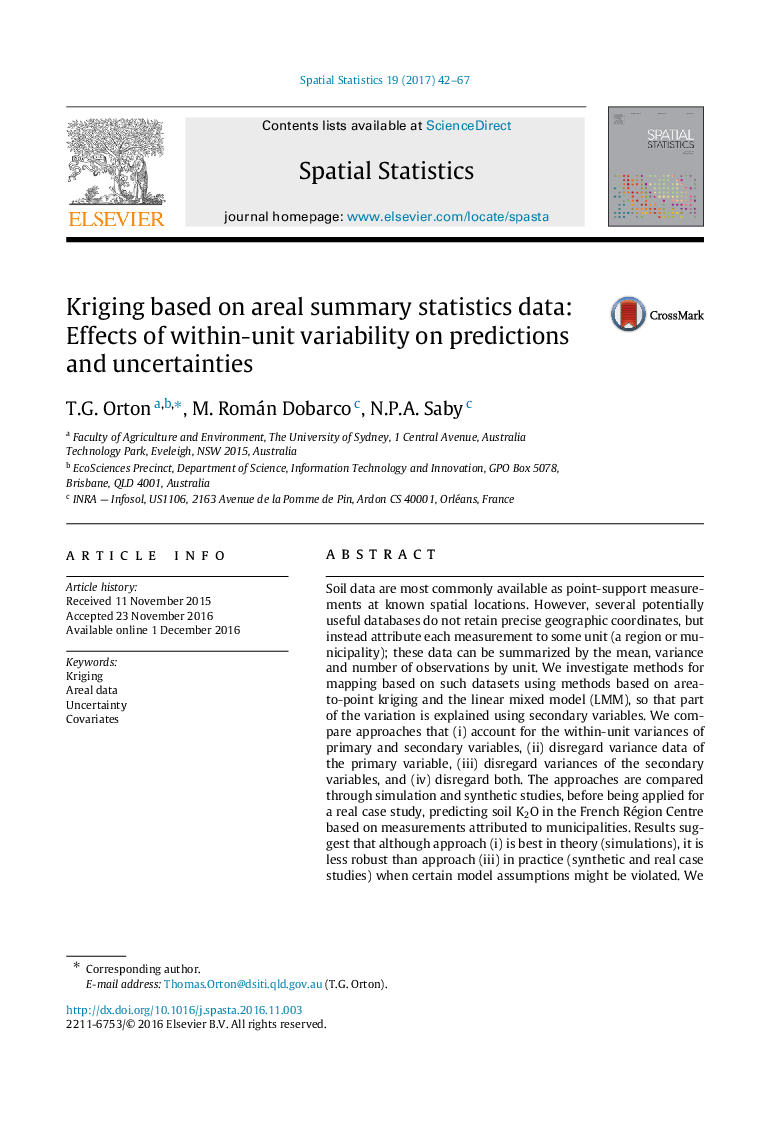| Article ID | Journal | Published Year | Pages | File Type |
|---|---|---|---|---|
| 5119036 | Spatial Statistics | 2017 | 26 Pages |
Soil data are most commonly available as point-support measurements at known spatial locations. However, several potentially useful databases do not retain precise geographic coordinates, but instead attribute each measurement to some unit (a region or municipality); these data can be summarized by the mean, variance and number of observations by unit. We investigate methods for mapping based on such datasets using methods based on area-to-point kriging and the linear mixed model (LMM), so that part of the variation is explained using secondary variables. We compare approaches that (i) account for the within-unit variances of primary and secondary variables, (ii) disregard variance data of the primary variable, (iii) disregard variances of the secondary variables, and (iv) disregard both. The approaches are compared through simulation and synthetic studies, before being applied for a real case study, predicting soil K2O in the French Région Centre based on measurements attributed to municipalities. Results suggest that although approach (i) is best in theory (simulations), it is less robust than approach (iii) in practice (synthetic and real case studies) when certain model assumptions might be violated. We therefore recommend approach (iii) that utilizes within-unit variances of the primary variable, but disregards those of the secondary variables.
